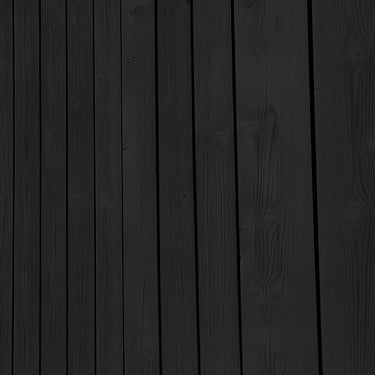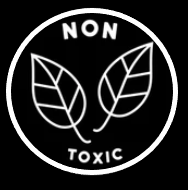Breathable exterior paint
Discover the Time-tested exterior paint for your home. Natural, durable, and moisture-regulating—perfect for wood and masonry surfaces.
🪓 WOOD & SURFACES


If you’ve ever painted the outside of your home only to watch the paint bubble, crack, or peel after a few seasons, moisture is likely to blame.
Most modern paints trap humidity behind the surface, eventually leading to damage.
That’s where breathable time tested exterior paint comes in. Designed to allow walls to breathe, this type of paint offers a natural solution for a healthier home—and a longer-lasting finish.
+ With natural pigments you will Get true Colors
In this guide, we’ll explore everything you need to know about breathable paint for exterior use, including:
What makes a paint breathable
Why it’s especially good for wood and masonry
How it improves durability and reduces maintenance
How to choose the right product
Natural vs. synthetic breathable paints
Application tips and long-term performance
What Is Breathable Exterior Paint?
Breathable paint is a type of coating that allows water vapor to pass through it, rather than trapping moisture inside the walls. This permeability prevents the accumulation of dampness, mold, and rot—a particularly important feature for older buildings, timber cladding, or porous materials like brick, stucco, and lime plaster.
Key Characteristics of Breathable Paint
Vapor-permeable: Lets moisture escape naturally
Matte or satin finish: Often less glossy than synthetic alternatives
Naturally pigmented: Frequently uses mineral or earth-based pigments
Non-film-forming: Unlike plastic paints, it doesn’t seal the surface completely
Why Does Breathability Matter for Exterior Walls?
Outdoor surfaces are constantly exposed to weather—rain, snow, frost, and direct sun. Even with good insulation, moisture can find its way behind paint layers. If that moisture can’t evaporate through the paint, it gets trapped, which causes:
Blistering and flaking paint
Damp patches and mold
Cracked wood or masonry
Peeling and repainting costs
Breathable paint prevents this damage by acting like a skin that protects, but still lets the structure "exhale."
Ideal Applications for Breathable Paint
While any building can benefit, breathable exterior paint is especially recommended for:
1. Timber Cladding and Wooden Facades
Wood is a living material—it expands, contracts, and absorbs moisture. Sealing it with plastic-based paint is like wrapping it in plastic: condensation builds up, leading to decay. Breathable paint moves with the wood, preserving its integrity over time.
2. Historic or Heritage Buildings
Older homes and stone buildings were designed to "breathe" long before vapor barriers existed. Applying modern synthetic coatings can trap moisture and accelerate damage. A breathable product respects the natural function of traditional materials.
3. Brick, Stucco, and Lime Renders
These porous materials need to release internal humidity to stay strong. Breathable paint enhances their function without altering their texture or appearance.
Benefits of Breathable Exterior Paint
🌿 1. Natural Moisture Regulation
By allowing vapor to escape, breathable paint creates a balanced microclimate inside and outside your walls. No more damp spots, mold growth, or fungal stains.
🧱 2. Long-Term Durability
Because the structure underneath remains dry and intact, your paint job lasts significantly longer. Some high-quality breathable paints can last 10–15 years without cracking or peeling.
🌞 3. UV-Resistant and Color-Stable
Natural mineral pigments used in many breathable formulas are highly resistant to UV light. They fade less over time, maintaining their natural beauty even under harsh sun.
🛠 4. Easy to Maintain and Retouch
Since breathable paints don’t form a thick film, touch-ups blend seamlessly. There’s no need to scrape off old layers before repainting—just brush over and blend.
♻️ 5. Eco-Friendly and Safe
Most breathable paints are made for interior, from renewable or mineral ingredients, free from VOCs (volatile organic compounds), solvents, or petrochemicals.
Natural vs. Synthetic Breathable Paints
Not all breathable paints are created for exterior use. The main types available on the market do not resist well outside and synthétic pigments are poor in colors wavelength.
1. Lime-Based Paint
One of the oldest types of breathable paint
Highly alkaline—naturally mold-resistant
Ideal for stone and masonry
Soft, chalky finish
2. Silicate (Mineral) Paint
Based on potassium silicate (water glass)
Bonds chemically to mineral surfaces
Extremely durable and UV-resistant
Low maintenance and colorfast
3. Casein Paint
Made from milk protein and lime or borax
Excellent for wood and plaster
Rich, matte finish with good adhesion inside only...
4. Clay Paints
Suited mainly for interiors, but some fortified formulas can be used outside
Soft and natural finish, but less weather-resistant
5. Modified Acrylics
Synthetic but with enhanced vapor permeability
Easier to find in conventional paint stores
May contain plasticizers or VOCs—check the label
🔎 Pro Tip: When comparing products, look for the SD value (a measure of vapor diffusion). The lower the SD, the more breathable the paint. Aim for an SD value under 0.1 for truly breathable exterior coatings.
How to Apply Breathable Exterior Paint
✅ Preparation Is Key
Clean the surface: Remove dirt, mold, or old flaking paint.
Repair damage: Fill cracks with breathable filler or lime mortar.
Prime if needed: Some mineral paints require a silicate primer.
Test the surface: Make sure it’s dry and absorbent before painting.
🖌 Application Tips
Use a natural bristle brush no roller.
Apply 1 generous coat rather than two
Avoid painting in direct sun, rain or freezing temperatures.
Let coat dry fully (usually 1 - 2 hours, depending on humidity).
What to Expect After Application
A Natural Look
Breathable exterior paints are not glossy or synthetic-looking. Expect a soft matte texture that enhances the natural beauty of the surface.
Slight Powdering at First
Some mineral-based paints may slightly powder when dry. This is normal and not a sign of failure. It actually helps preserve the surface over time.
Subtle Weathering
Over the years, breathable paint may patinate or soften in tone, giving your home a timeless and authentic appearance rather than a plastic-like finish.
Maintenance and Longevity
One of the best features of breathable paint is how low-maintenance it is:
No peeling or bubbling to worry about
Spot repairs are easy and invisible
Repainting doesn’t require stripping or sanding
Natural pigments stay vibrant longer
With the right preparation and product, a breathable exterior paint job can last over a decade—especially on wood or brick surfaces.
How to Choose the Best Breathable Paint for Your Home
Before purchasing, consider the following:
Surface type: Wood, plaster, stone, or brick?
Climate: Humid, cold, or dry?
Desired finish: Matte, chalky, or mineral-rich?
Eco-consciousness: Want zero VOCs and biodegradable ingredients?
Always read the product data sheet (PDS) or safety data sheet (SDS) to understand composition, permeability (SD value), and durability.
Final Thoughts
If you care about the longevity of your home, the health of your walls, and the environment, breathable exterior paint is one of the smartest investments you can make. It offers a unique blend of traditional wisdom and modern performance, proving that going back to natural, breathable materials is often the most advanced choice.
No more plastic coatings. No more moisture traps. Just healthy walls, vibrant colors, and timeless charm—season after season.




